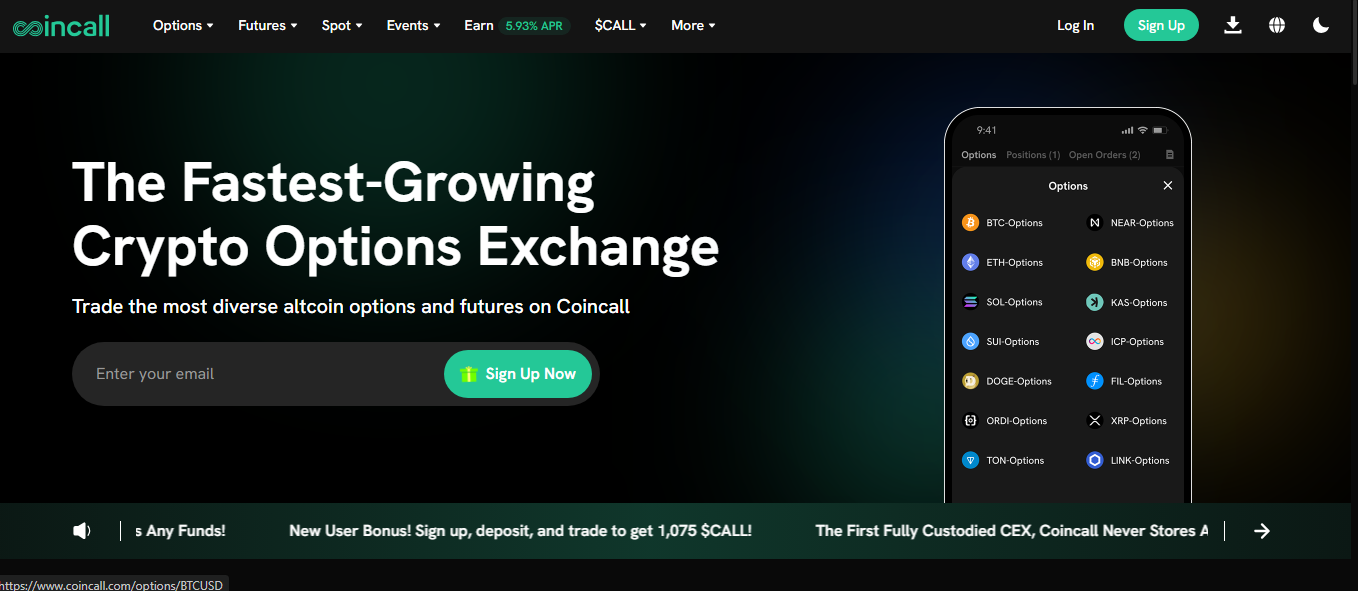CoinCall Review - Clean Platform With Big Trade-Offs

CoinCall popped up around 2022 aiming to be an all-in-one space for casual traders. It mixes spot and leveraged markets, staking options and a friendly interface that runs well on mobile. The big promise is clear - make trading approachable while still offering tools for active users. But under that neat surface are questions about how it all holds up if you push it hard.
Core features in a nutshell
Where CoinCall does well
- The user interface is crisp and modern, so beginners won’t get overwhelmed.
- Fees are reasonable, with a stable maker-taker spread that’s competitive for casual volumes.
- Having up to 10x leverage built right into the dashboard is handy for those wanting to dabble in margin.
- Staking is a nice passive income layer for holding popular coins directly on the platform.
But here’s the catch
- The list of supported coins is small. You’ll find BTC, ETH, maybe some top 20, but no fun hunting DeFi gems or memecoins.
- Fiat support isn’t direct. To move money in or out, you’ll rely on P2P or outside payment partners, which adds friction.
- There’s no well-documented regulatory license even though the company says it’s based in Singapore. That leaves less fallback if disputes come up.
- Users have split experiences - many report trades going smoothly, but there are also stories of slow withdrawals or extra KYC checks holding up funds.
- Liquidity is light. If you try to push through a big order, it might slip the price more than you expect.
What that means for risk
Because there’s no clear licensing info, you’re trusting a private offshore entity with your crypto. That can work out fine if the exchange runs smoothly, but if it stalls on withdrawals or faces legal pressure, you might have little recourse.
Adding in margin increases personal risk. With thinner order books, liquidations could hit faster or at worse prices. It’s the kind of place where you use leverage carefully and keep position sizes modest.
Who should try CoinCall
It’s a decent match for smaller traders who want an easy app and light leverage or staking without needing to explore hundreds of tokens. If you’re just experimenting with trading, the design makes it unintimidating.
Who it’s wrong for
If you demand deep liquidity, detailed audit reports, or want to flip niche altcoins all day, this exchange will feel limiting. Also steer clear if you expect instant fiat transfers or guaranteed regulatory fallback.
Bottom line on CoinCall
CoinCall serves up a slick experience with decent fees and enough tools for casual crypto use. But its short token list, low liquidity, indirect fiat, and lack of strong oversight keep it squarely in the high-caution zone.
Best for you if you want a clean platform for moderate spot or margin trades plus some staking. Avoid it if you’re moving large sums, chasing exotic tokens or want rock-solid regulatory backing.
Treat it like a test drive. Try out small deposits, watch how withdrawals work, and stay aware this isn’t the place to store your core capital. A neat sandbox - but not your crypto fortress.
Disclaimer
“This content is for informational purposes only and does not constitute financial advice. Please do your own research before investing.”
.png)







%203.svg)
%203.svg)




















